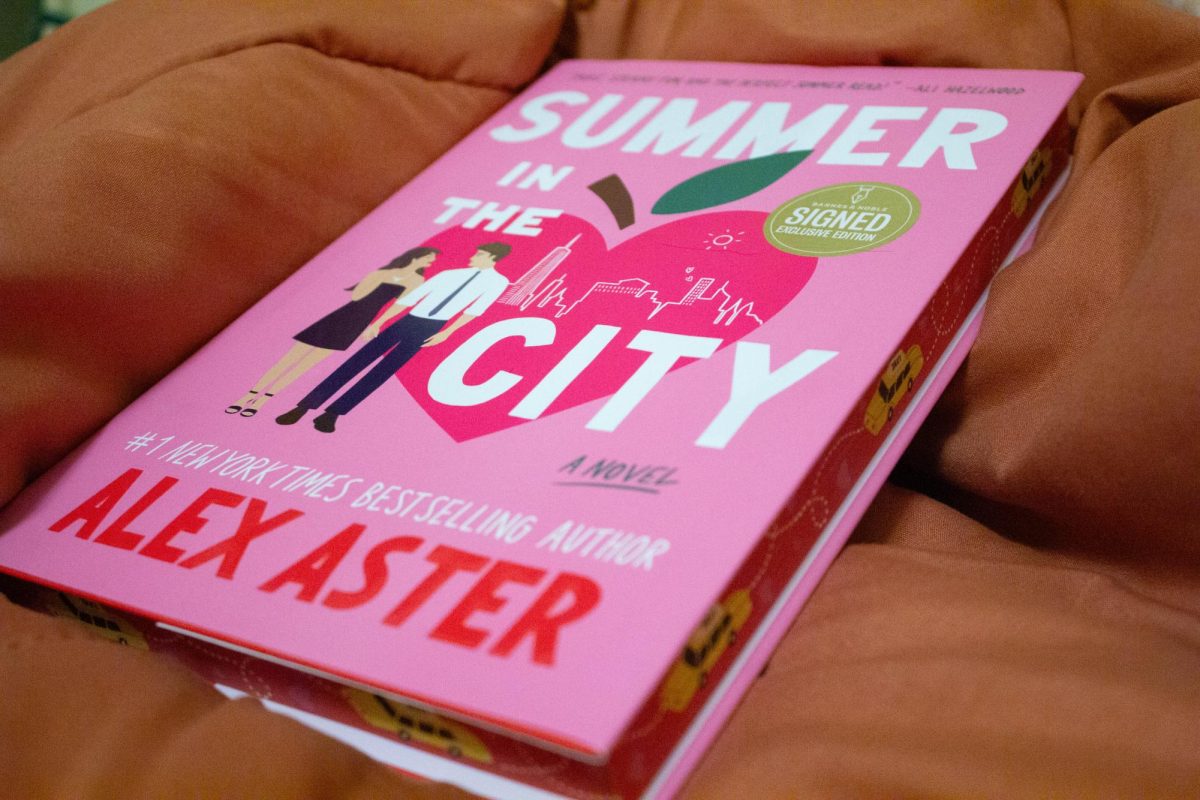During my 10th-grade year of high school, I discovered Edgar Wright and his movies: he’s been one of my favorite directors ever since. From “Baby Driver” to “Shaun of the Dead,” I completely fell in love with his style of writing and directing.
It was through this ominous star door that I was introduced to the world of “Scott Pilgrim.” Wright directed the feature adaptation in 2010 but, before that, it was a series of graphic novels by Bryan Lee O’Malley. I immediately loved the film not just for its showcase of Wright’s directorial staples but for the eccentric world of offbeat characters and awkward humor.
Therefore, when I heard Netflix was releasing an animated “Scott Pilgrim” series, it quickly became one of my most anticipated shows of the year; even more so after hearing the entire original film cast would be reprising their roles, and Wright would act as an executive producer.
Not only did “Scott Pilgrim Takes Off” rise to the momentous challenge of living up to its successor, it far exceeds my already-high expectations in several categories.
First and foremost is the story. Where I was expecting more or less a beat for beat retelling of the movie, the show takes a completely different direction, offering an alternative story that still references and infuses elements of the original narrative.. Where the original story sees Scott battling a league of seven evil ex-boyfriends in order to win the affection of the girl of his dreams, Ramona Flowers, the show explores what would happen if Scott was killed during the very first fight. Feeling responsible for Scott’s fate, Ramona starts investigating the murder, quickly finding that Scott wasn’t actually killed but rather kidnapped. With this newfound information, Ramona starts interrogating possible suspects in order to determine what happened to Scott and who is responsible.
At first, I was certainly caught off guard by the change, but I quickly learned to embrace it, relishing in the opportunity for further exploration into the world of “Scott Pilgrim.” Something that took a little longer to get used to, however, was the absence of the titular character. After disappearing in the first episode, Scott doesn’t reemerge until the sixth, leaving only two more for him to appear in before the end of the series. I wouldn’t say I was actively against his absence, more so I wasn’t sure how to feel about it. Afterall, his character served as an anchor that tied everyone together in the original film.
Ultimately, having completed the season — and therefore being able to look at the full scope of the story — I do think it works. While yes, it is a little unsettling to have our presumed guide into this world disappear in the first episode, the opportunity it provides to learn more about other characters and their backstories is worth it, especially in regards to Ramona. The show offers a deeper dive into the supporting characters than has been provided previously; giving viewers a chance to understand their motivations and intentions beyond just being evil or mysterious just for the sake of it. In doing so, both Ramona and the exes are given a chance for redemption that isn’t present in the movies. Instead of fighting the exes, she has an opportunity to make amends with them and reflect on her past mistakes.
I could see how some people can be unhappy with this, or think it strays too far from the series’ video game-esque world where street fights are common practice. However, I think it’s done in such a way that feels authentic not only in its message but also to the world of the story. It’s thoughtful in its consideration of previous material while expanding upon it.
The same can be said for the resolution of Scott’s disappearance; it feels on-brand but also fresh and contemporary at the same time. I greatly appreciated that, while taking the time travel route, they didn’t also delve into multiverses, because if I see another multiverse anytime soon, I’m gonna throw my computer at the TV. I enjoyed the somewhat-convoluted nature of what happened; it felt reminiscent of “Bill and Ted’s Excellent Adventure,” where the details don’t really matter as long as you get the gist of what’s going on. The direction they decided to go provided a great opportunity to bring this eclectic world of characters together. Ultimately, I would say I enjoyed this theme more than the original film’s, which is largely focused on drawing characters apart and pitting them against each other.
The voice work throughout the season is stellar. Beyond the predetermined success to be expected by bringing back all of the original cast members, everyone delivers enjoyable, high-effort performances. It never felt like anyone was resting on their laurels; to me, there was a strong sense of commitment and quality across the entire cast. That being said, there were a few performances that stood out among the rest. First and foremost, Mary Elizabeth Windstead did great as Ramona. She absolutely rose to the challenge of a larger, more weighted role, providing a perfect balance of sincerity with the sarcasm and edginess that are staples of the character.
Chris Evan as Lucas Lee was also notable in the same way I would say he was in the film. Lucas Lee is just a fun character, and Evans once again played him with a great sense of playfulness. A standout that surprised me however was Johnny Simmons as Young Neil. Whereas I thought his character was just kind of fine in the movie, he’s got a lot more to work with in the show, and he handles it fantastically. His deadpan, wonder-struck deliveries frequently lend themselves to favorite lines or moments within an episode. Of all of the characters that received further development through this show, he was one of my favorites.
The animation style, which is based on the art style from the original graphic novels, is stunning. The expressive, cartoonish nature lends itself perfectly to the world and its sense of humor. The colors are so vibrant that they make the show pop right off the screen, and the inclusion of video game-based graphics and motifs are executed as excellently as in the film. The fight scenes feel chaotic and intense in a good way, just as you would expect from a video game. Coming from a graphic novel originally, the translation to an animated show was probably a little easier than that of the live action movie, but still, the animation sets itself apart. It is clearly of high quality and effort.
“Scott Pilgrim Takes Off” lives up to its name in spades; it’s a worthwhile entry in terms of the “Scott Pilgrim” franchise as a whole, in terms of the cult classic live action movie and just on its own. The story is familiar yet original, the characters are interesting and easy to connect with and the animation is beautiful. Even if you’ve never heard of the franchise, I can’t recommend checking it out enough. If you are familiar with the franchise, you definitely need to check it out. I doubt you will be disappointed.





